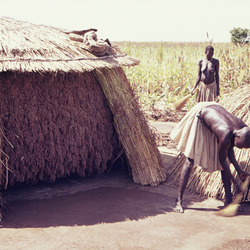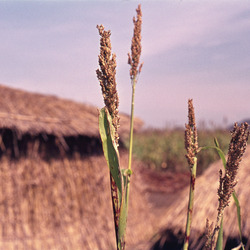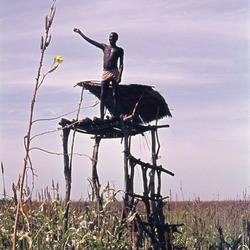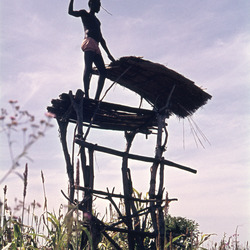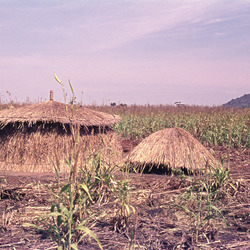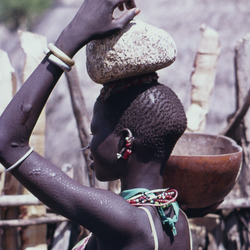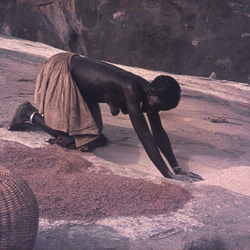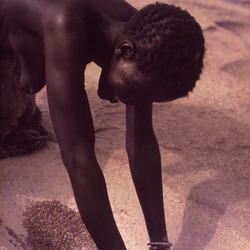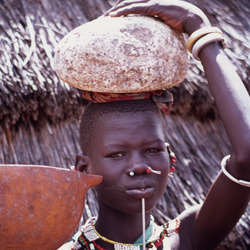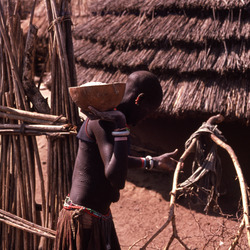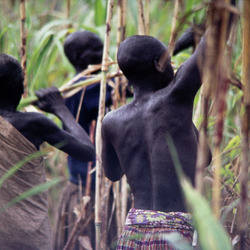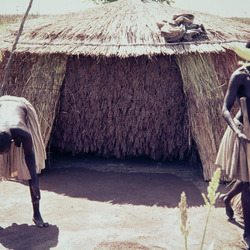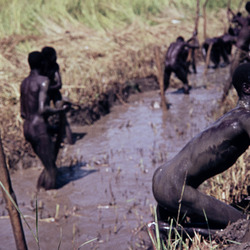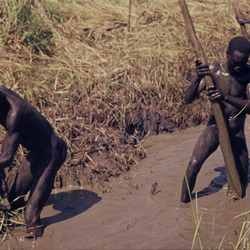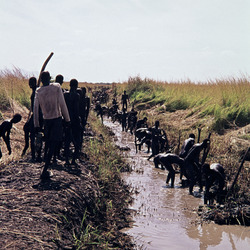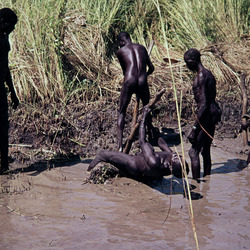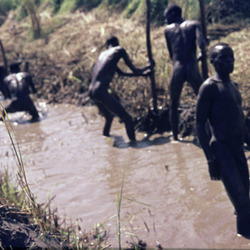Agriculture 34
The black-cotton soil plains outside of the village are very fertile and used for cultivating the nutritional sorghum. Land is not limited, as good land for cultivation is available further away from the villages. There is a shortage of fields close to the villages, and these are allocated to elderly and others who have difficulties in walking far.
The hill and the plains are divided into lineage lands far out from the hill. A field is cultivated for about ten years before it is left fallow for half this period. In cases when members of a family line decide to cultivate virgin land, a member is free to mark a large field as his own. He may then have in mind brothers and sons as inheritors of the land.
After the end of the dry season the large sorghum fields are cleared – often with the help of age groups, paid with beer. Only the 1 ½ inch of soil is dug and made ready for sowing after the short rain before the rainy season (mid-May). Weeding is done three times until August when the grain is left, to be harvested in October. But during these months, swarms of birds must be repelled. Ropes hooked with bells are stretched between platforms, and slingshots with clay pellets keep swarms of birds away. If a bird is killed, it will be roasted and eaten.
Different brands of sorghum are mixed when sowing—some are separated during harvesting, some are eaten as sugarcane, others are tasteful when roasted, but most of the crop are mixed when storing. A small portion of maize, simsim, beans and okra may be planted in between the sorghum or in small separate fields. The maize is used as food for the bird-scarers on their long shifts. Bundles of harvested sorghum are stacked above the ground in an open place in the center of the field to dry. Threshing and winnowing is done in the field, and baskets of grain are carried home to the village and stored in granaries.
Grain is the main food as well as the main currency for exchange of goods.
During the rainy season the river Koss could flood the fields of Kor. A canal was built to protect the sorghum fields. A big job, called for by the government and organized by the age group.
A hard, but fun job that ended in a big party.
